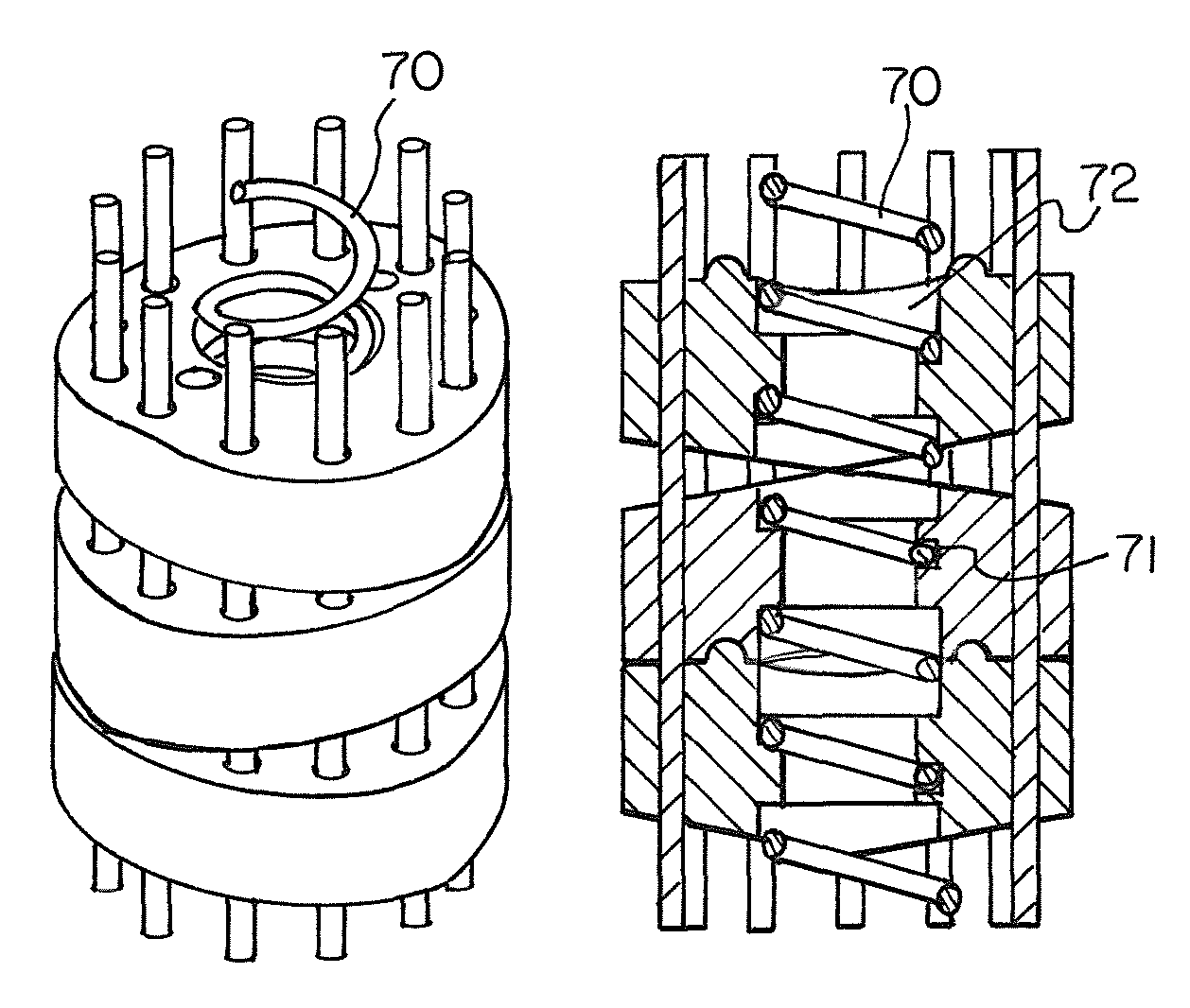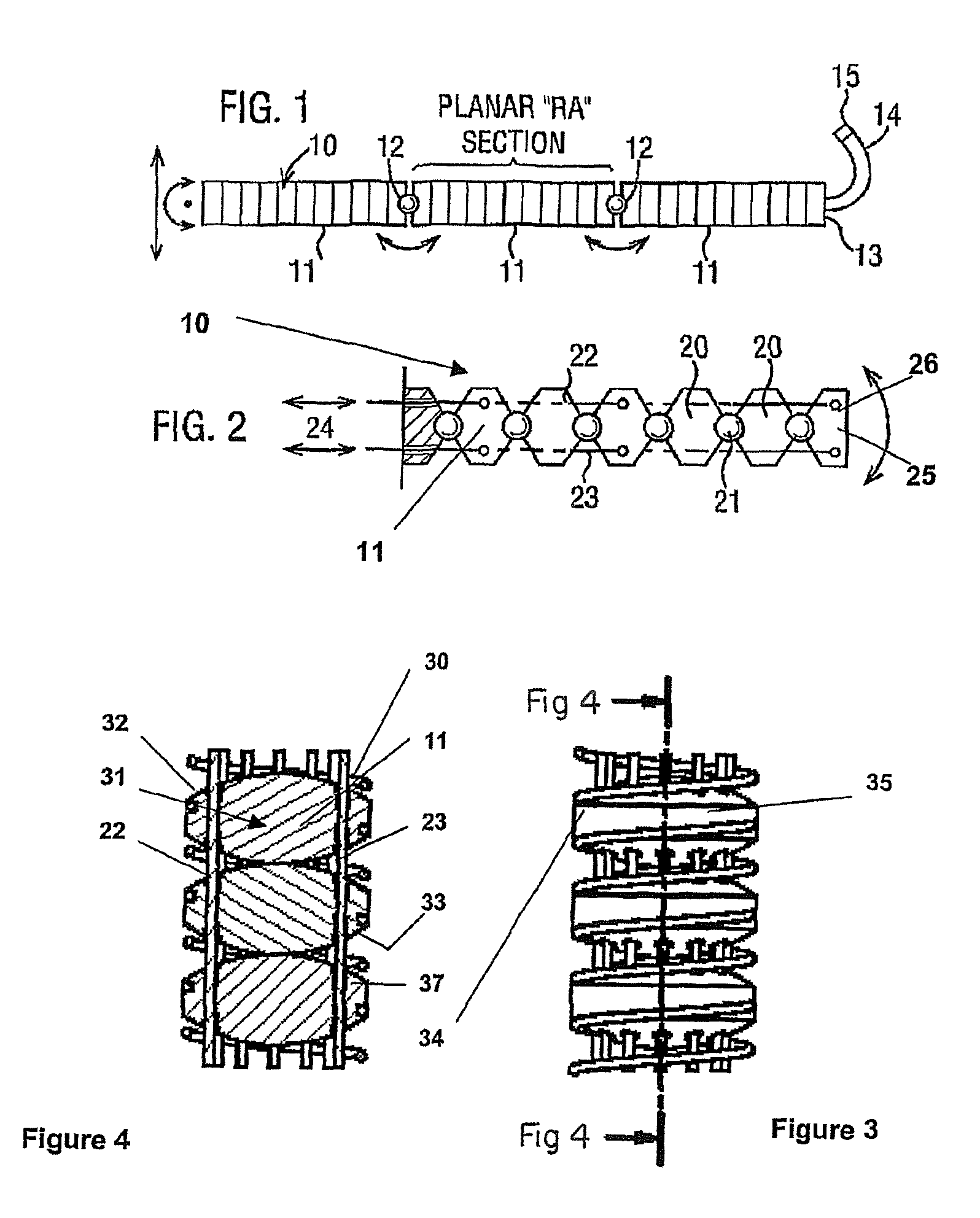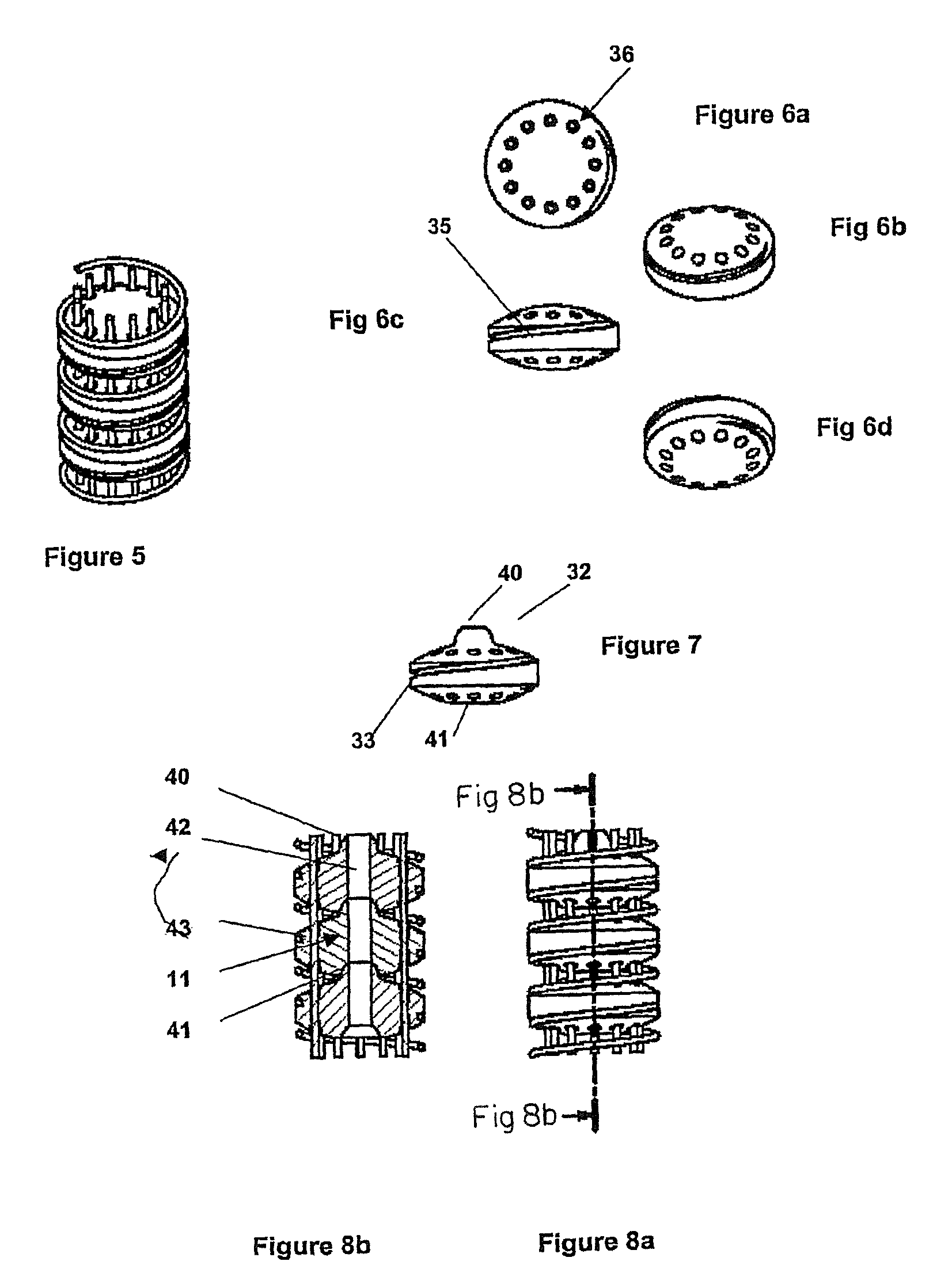Robotic arms with coaxially mounted helical spring means
a technology of helical springs and robotic arms, applied in the field of robotic arms, can solve the problems of increasing system complexity, adding complexity and cost of manufacture, and reducing the cost of manufacturing, so as to reduce the cost, reduce the cost, and reduce the rotary movement of links.
- Summary
- Abstract
- Description
- Claims
- Application Information
AI Technical Summary
Benefits of technology
Problems solved by technology
Method used
Image
Examples
Embodiment Construction
[0060]Referring to FIGS. 1 & 2, the arm as shown comprises three segments 10, each segment 10 comprising a plurality of link elements 11. Each segment 10 is connected to its neighbour by means of an articulated joint 12. The distal end 13 of the arm carries a work head 14 incorporating a tool 15. Each plurality of link elements may comprise an end cap 11′ to engage with the first and last links of the segment and with the spring to contain rotation of the links with respect to the spring.
[0061]Each individual link 11, is capable of limited movement with respect to its neighbour by virtue of an articulated joint 21 (see FIG. 2) and the segment 10 as a whole is controlled by means of control wires and 22 and 23 which extended through each of the intermediate links 11 and is fixedly attached to the end element 25 of segment 10. Each of the control wires extends to actuator means indicated generally at 24 in FIG. 2, which actuator means can be controlled to provide varying tensions to e...
PUM
 Login to View More
Login to View More Abstract
Description
Claims
Application Information
 Login to View More
Login to View More - R&D
- Intellectual Property
- Life Sciences
- Materials
- Tech Scout
- Unparalleled Data Quality
- Higher Quality Content
- 60% Fewer Hallucinations
Browse by: Latest US Patents, China's latest patents, Technical Efficacy Thesaurus, Application Domain, Technology Topic, Popular Technical Reports.
© 2025 PatSnap. All rights reserved.Legal|Privacy policy|Modern Slavery Act Transparency Statement|Sitemap|About US| Contact US: help@patsnap.com



